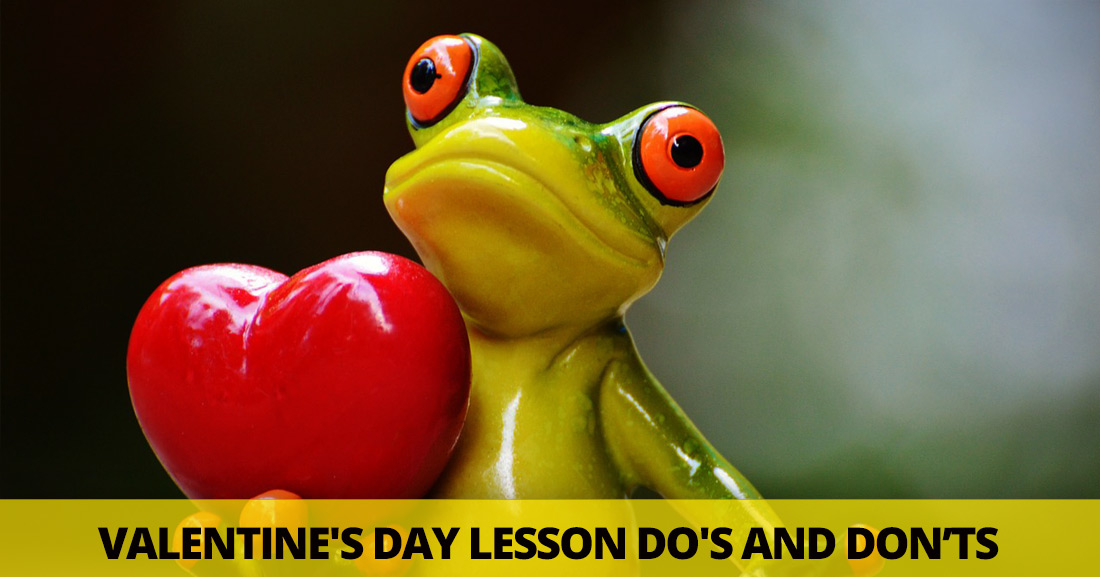Valentine's Day Lesson Do's and Doníts

Now that everyone has recovered from the holidays and had time to settle back into the routine, take advantage of the fact that your students are a bit refreshed from the time off and start the month by introducing some new topics. If you find yourself short on interesting lesson ideas, especially towards the end of the month, consider the activities from this article.
5 Fantastic February Lesson Ideas
Valentine’s Madness
Valentine’s Day is the topic of choice for this month’s cultural lesson but what you decide to do with it is up to you. Lesson plans range from focusing entirely on the holiday itself to Valentine’s Day themed lessons that still revolve around the material your students are studying in their textbooks. If you are progressing through your course material well, consider using a class period for fun Valentine’s Day arts and crafts and vocabulary practice. With adult classes a discussions on love and romance may be more appropriate but even they will appreciate decorations, candy, and some simple themed activities. Falling in the middle of the month, Valentine’s Day creates a nice break in the month’s schedule so make the most of it.
February Mad Libs
For a good laugh, have students do a Mad Libs activity. You can even use another February theme, such as Valentine’s Day, to create the story. Mad Libs test students’ knowledge of parts of speech. You can have students work individually, in pairs, or in small groups. Give students a list of numbers with parts of speech written next to them and have students think of an appropriate word for each. Once students have completed the list, check it to ensure that they chose appropriate words. Once the list is corrected, students can transfer their words into the blanks of a story and read the completed story aloud to the class. These usually end up being really silly stories so hopefully your students can appreciate the humor.
Polar Bear Day – Why Not?
Polar Bear Day is February 27th. It is a great time to ask students some trivia questions about polar bears and the artic. You can even introduce the topic with the question “Why don’t polar bears eat penguins?” The answer is that polar bears live near the North Pole while penguins live near the South Pole. You can also talk about global warming with students at almost any level. With lower level learners use simple sentences and worksheets to structure the activities or discussion. With advanced students elicit what students know about global warming, talk about its impact globally and locally, and have students imagine how this will impact people in the future.
Leap Years Are Fun
February is the time to discuss leap years, months, and calendars. Ask if anyone in your class was born on February 29th. The level of your students will determine how detailed you get in your introduction. You could have a technical approach to the subject and talk about why leap days are necessary every four years. This might take the form of a short informative lecture but you could use it in to lead into a discussion on what other ways we could use to make this adjustment. On the other hand, you could get creative and ask students to dream up what they would do with an extra day if they could do anything they wanted. This would make a great writing activity.
Black History Activity
February is also Black History Month in the United States. If you are teaching in the United States, you can incorporate this into your schedule by doing a special lesson or project based around this theme. If you are not teaching in the United States, you could still cover this topic but it depends on your school and your students. It may be difficult to properly explain the background material to very young or beginner students and you do not want to turn the class period into a history lesson. For adult and advanced classes you may choose to give some historical information and then lead a discussion.
Another thing you can do in February is ensure that students are still comfortable using the material covered before the break by doing a review. Despite being so short, February often feels like the longest month of the year. People who live in colder climates have had enough of winter and just want spring to arrive. Make sure to brighten the atmosphere in your classroom by encouraging students to keep up the good work and set a good example by staying positive.